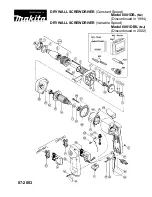
8
RTW 300W 042111
5.
ALARM FUNCTIONS
5.1
OVERVOLTAGE PROTECTION
When the output voltage of the RTW 300W Power Supply increases beyond the specified values
(see Table 1), the output is cut OFF. To restart (reset) the unit, remove, then reconnect AC input
power after about 30 seconds; or open and then reclose the RC pins (see PAR. 4.3).
5.2
CURRENT LIMIT
The unit does not shut down if output current exceeds specifications (see Table 1). Instead, the
unit continues to operate, supplying the maximum current, while output voltage is reduced accord-
ingly as long as the output voltage does not drop lower than the undervoltage protection value
(see Table 1).
5.3
OPTICAL COUPLER OUTPUT ALARM CIRCUIT
When the output voltage falls to less than about 80 percent of rated output voltage the alarm is
activated: a high logic level appears at the ±PF pins of connector CN1 (see Figure 6). The default
state of the alarm is logic low. The sink current is 50mA maximum, the maximum collector to emit-
ter saturation voltage is 0.40 Volts, and the collector to emitter voltage is 40 volts maximum. The
PF pins are isolated from the AC input and DC output terminals.
FIGURE 6. OUTPUT ALARM CIRCUIT, OPTICALLY ISOLATED
5.4
UNDERVOLTAGE
If the output voltage of the power supply falls below a preset percentage of the rated output volt-
age, the power failure alarm will go to the high logic state and the output is cut OFF. Table 1 lists
the percentage and the time duration each model will tolerate the undervoltage condition before
the output is shut off.
6.
LOAD CONNECTION
6.1
CONNECTING THE LOAD USING LOCAL SENSING
To connect the load for local sensing, connect the +S to (+) terminal and –S to (–) terminal. The
load is connected across DC output (+) and (–) terminals (see Figure 7).
CAUTION: For 3.3V and 5V models use both (+) and both (–) output terminals to reduce cur-
rent carried through any one terminal. If current on a single terminal exceeds 40
Amperes, the terminal will overheat and damage the electrolytic capacitor.
6.2
CONNECTING THE LOAD USING REMOTE SENSING
For remote sensing the load is connected as shown in Figure 7. Remote error sensing at the
load terminals compensates for a voltage drop in the connecting wires as indicated in
Table 2. For remote sensing, the twisted-wire sensing cables shown in Figure 7 must
be removed from the +S to (+) and –S to (–) terminals.


































